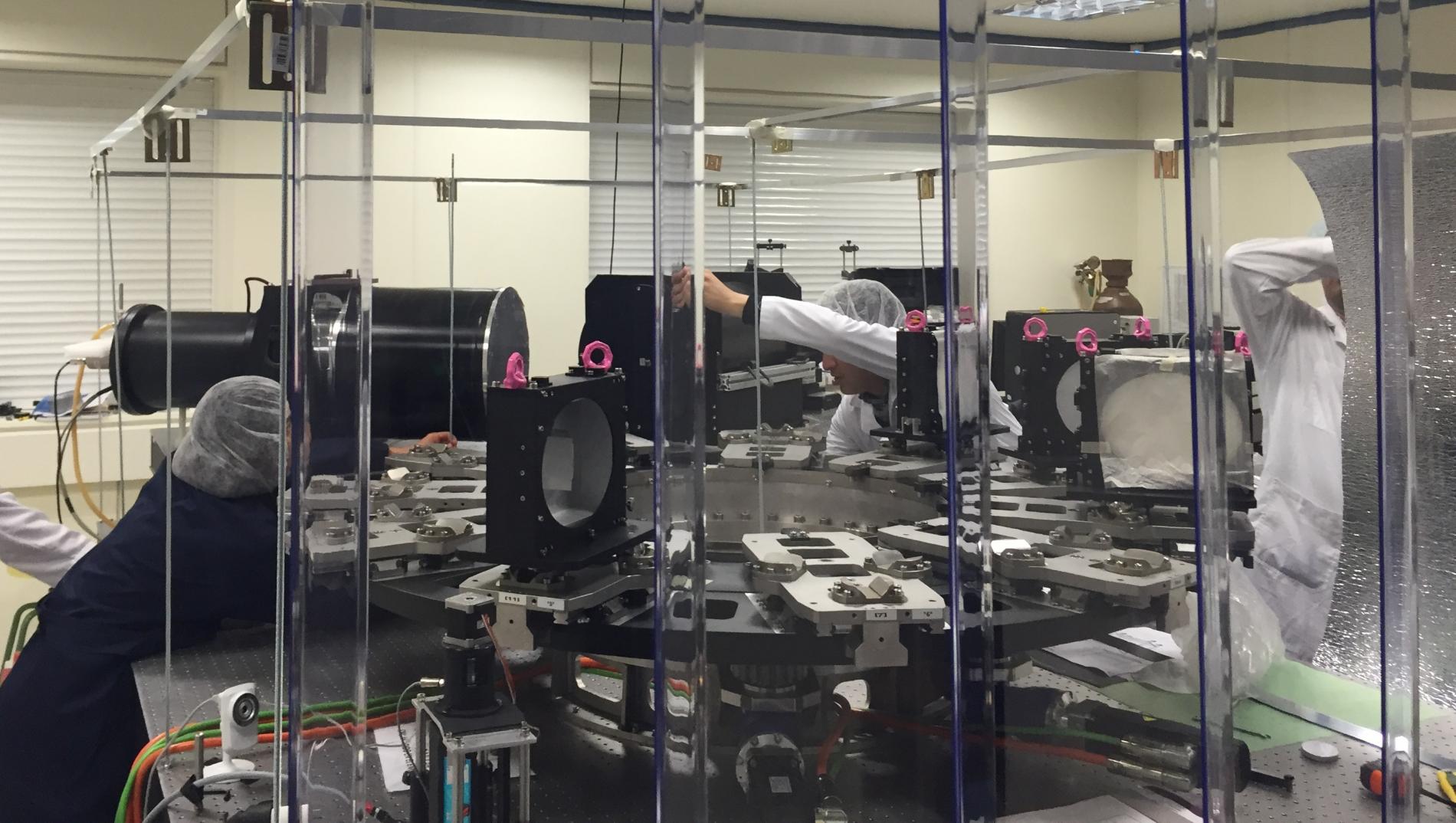First light for MEGARA instrument on the Gran Telescopio Canarias
The new 3D spectroscopy instrument, in which the IAA-CSIC participates, will make its first observations next Monday
The first light for MEGARA, the new instrument on the Gran Telescopio Canarias (GTC), will allow the study of the chemical composition and dynamics of galaxies in different times of the universe. MEGARA has been built by a consortium of national and international institutions, led by the Complutense University of Madrid and in which the Institute of Astrophysics of Andalusia (IAA-CSIC) participates.
MEGARA (Multi-Spectrograph in High Resolution GTC for Astronomy) seeks to cover a unique niche in the current instrumentation, since it will allow solving scientific problems hitherto unapproachable. "All of us who have worked on this project are excited about being able to offer MEGARA's unique capabilities and make the GTC the reference tool for the next few years," says lead researcher Armando Gil de Paz (UCM).

MEGARA will be able to study individual stars outside our galaxy, and will even be able to analyze how the stars and the gas moved more than ten billion years ago, when the first galaxies formed. In order to do this, it will use the most advanced technology in optical fibers and scattering elements, known as holographic networks.
The use of these technologies in an instrument with the ability of MEGARA to solve light in its energy components, combined with the ten meters of the GTC mirror diameter, put this instrument at the forefront of astronomical observation technology. The development of MEGARA has been a challenge, due to the large number and complexity of its subsystems, but the project has been completed in a record time of less than three years.
This has been possible thanks to the team of institutions and companies that have participated. "The IAA-CSIC has developed the program for calculating the paths of robotic positioners of the multiobject observation mode; it will allow to move each optic fiber beam to its position in the focal plane with the precision of twenty five microns required", says Jorge Iglesias, a researcher at the Institute of Astrophysics of Andalusia (IAA-CSIC) involved in the project.
The MEGARA project is co-financed by the public company GRANTECAN SA and the institutions of the consortium: Complutense University Madrid, National Institute of Astrophysics, Optics and Electronics, and Institute of Astrophysics of Andalusia (IAA-CSIC), which have contributed with more than 60% of the budget and that will therefore receive observation time once the instrument begins to operate.
The first light event will be attended by GTC director Romano Corradi, the director of the Canarian Institute of Astrophysics, Rafael Rebolo, the chancellor of the Complutense University of Madrid, Carlos Andradas, as well as representatives of the institutions involved in the construction of the instrument, Isabel Márquez, of the Institute of Astrophysics of Andalusia (IAA-CSIC), and Rafael Izazaga, of the National Institute of Astronomy, Optics and Electronics of Mexico.
Instituto de Astrofísica de Andalucía (IAA-CSIC)
Unidad de Divulgación y Comunicación
Silbia López de Lacalle - sll[arroba]iaa.es - 958230532
http://www.iaa.es
http://www-divulgacion.iaa.es

